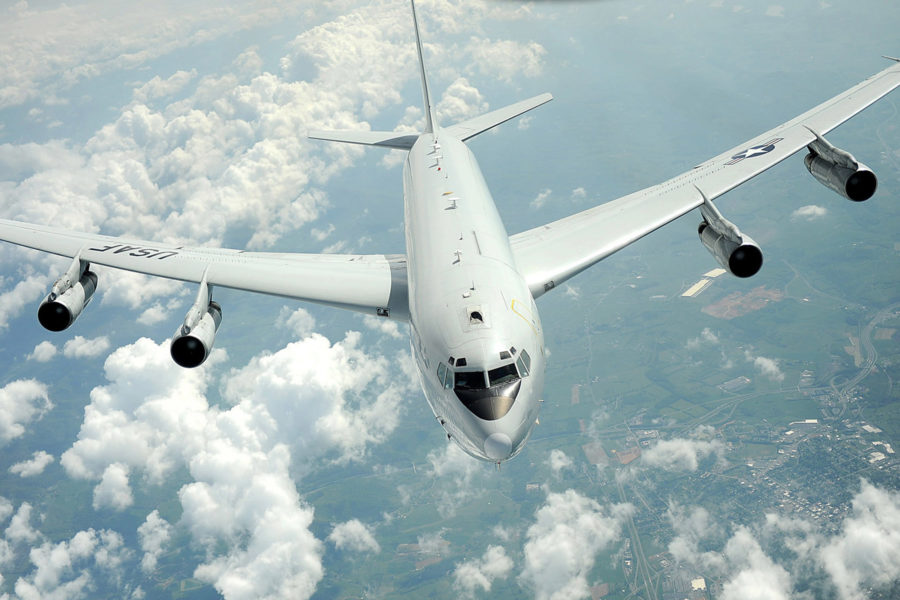The Air Force’s plan to retire most of its E-8C JSTARS fleet took another step toward reality with help from a congressional panel. The House Armed Services tactical air and land forces subcommittee unveiled its markup of the fiscal 2023 National Defense Authorization Act on June 8.
A provision included in the markup amends the 2019 NDAA by removing a section, which included several requirements meant to protect the JSTARS, or Joint Surveillance Target Attack Radar System, fleet from a quick retirement.
One such requirement was that the Air Force maintain at least six E-8s “for allocation to the geographical combatant commanders through the Intelligence, Surveillance, and Reconnaissance Global Force Management Allocation Process” until the fleet is entirely retired.
Keeping the requirement would block the divestments the Air Force asked to make as part of its 2023 budget request. The service wants to retire eight of 16 remaining E-8s by the end of fiscal 2023 and another four by the end of 2024, leaving just four planes, short of the six required by law.
The HASC subcommittee’s proposal is to eliminate that requirement completely, seemingly clearing the way for the Air Force to proceed with its divestitures.
The reduction of the JSTARS fleet is necessary, Air Force officials have said, because the aging airframe is not survivable in a high-end conflict—”they’d be gone in a minute,” Maj. Gen. James D. Peccia III, deputy assistant secretary for budget, told reporters in March.
However, some observers have expressed concern that in looking to retire most of the fleet before replacement systems such as space-based ISR are ready, the Air Force will create a gap in capabilities. Air Force leaders say they should be able to manage that gap.
The E-8C isn’t the only Air Force fleet poised to take a cut in the 2023 NDAA. The HASC subcommittee on seapower and projection forces included provisions in its markup that would let the Air Force cut its tanker fleet down to 466 aircraft and its C-130 fleet down to 271.
Reviews and Reports
In addition to the eliminated requirement, the tactical air and land forces subcommittee included a number of reviews and reports that it wants the Air Force to conduct in the coming months.
Among them:
- A study “on the requirements for the Air Force combat search and rescue mission to meet the objectives of the most recent National Defense Strategy.”
- A report “on the required timelines to achieve a fieldable and relevant unmanned autonomous system to team with and augment the current and future piloted aviation force.”
- A report “on any plans to include autonomy software in [the] … next generation air dominance family of systems initiatives.”
- A report “regarding the planned reduction of advanced training aircraft capacity.”
Pairing unmanned autonomous systems with manned platforms has been a high priority for Air Force Secretary Frank Kendall, who has endorsed the idea of such aircraft for both fighters and bombers.
In its markup, however, the committee expressed concerns “with the current pace of efforts and the cost goals recently announced” by Kendall, noting that previous efforts in autonomous aircraft have shown progress but never progressed to actually fielding new capabilities; and registering doubt that such platforms could reach Kendall’s goal of costing at least half of other manned platforms.
The committee also raised doubts about the Air Force’s plans to transition to a smaller training fleet as it switches from T-38s to T-7s, saying it needs more details “to understand the underpinning analysis that justifies replacing 422 T-38C aircraft with just 350 T-7 aircraft.” As part of the report, the committee is asking whether the planned reduction would have a negative effect on pilot training and its effect on operational or training safety.
